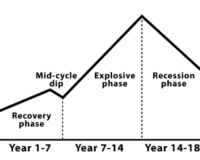Introduction
When it comes to real estate, the old adage “location, location, location” couldn’t be more accurate. The location of a property plays a pivotal role in determining its value, and for good reason. In this blog, we’ll delve into the multifaceted impact of location on property value, helping you understand why it’s often considered the most critical factor in real estate.
1. Neighborhood Quality
The quality of the neighborhood in which a property is located has a profound impact on its value. Desirable neighborhoods with low crime rates, good schools, proximity to amenities, and a well-maintained appearance tend to command higher property values. Conversely, properties in less desirable neighborhoods may have lower values due to safety concerns, limited amenities, or declining infrastructure.
2. Proximity to Amenities
The proximity to essential amenities significantly influences property values. Homes or commercial properties located near schools, hospitals, parks, public transportation, shopping centers, and entertainment venues often have higher values. The convenience of having these amenities nearby can be a considerable selling point.
3. School Districts
The quality of the local school district can have a substantial impact on property values, particularly for families with school-age children. Homes in areas with highly-rated schools tend to be more expensive, as parents are often willing to pay a premium for access to quality education.
4. Employment Opportunities
Areas with strong job markets and employment opportunities tend to attract more residents, leading to increased property demand and higher values. Conversely, regions with limited job prospects may experience stagnant or declining property values.
5. Safety and Crime Rates
Safety is a top priority for property buyers and renters. Neighborhoods with low crime rates are inherently more attractive, leading to higher property values. On the other hand, areas with higher crime rates may experience reduced demand and, consequently, lower property values.
6. Access to Transportation
Easy access to transportation options, such as highways, public transit, and airports, can significantly impact property values. Properties located near major transportation hubs or with convenient commuting options tend to be more valuable due to the convenience they offer.
7. Future Development and Urban Planning
The potential for future development and urban planning initiatives can also affect property values. Areas that are slated for infrastructure improvements, new commercial centers, or residential expansion may experience increased property values as investors anticipate growth and development.
8. Environmental Factors
Environmental factors can play a role in property values. Properties in scenic areas with views of mountains, bodies of water, or natural parks may command higher prices. Conversely, properties near industrial areas or environmental hazards may have lower values due to potential health and safety concerns.
Conclusion
Location is undeniably one of the most significant factors influencing property value. The neighborhood’s quality, proximity to amenities, school districts, employment opportunities, safety, transportation access, future development, and environmental factors all contribute to a property’s desirability and, consequently, its market price. When buying or investing in real estate, carefully consider the impact of location, as it can be a determining factor in the property’s long-term value and potential for appreciation.






